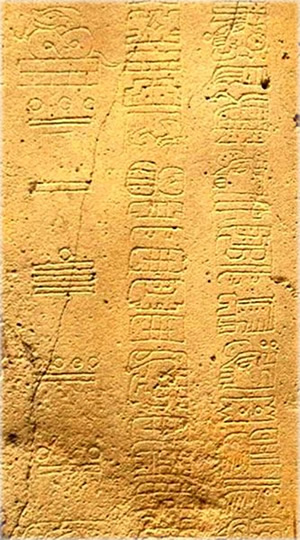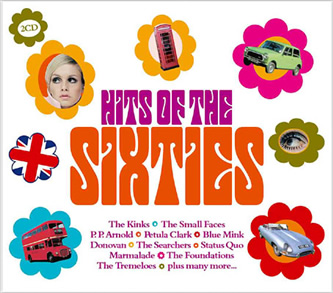|
||||||||||||

The Sprint to 2012
By Eric Francis
THE ASTROLOGY of 2008 puts us onto the final approach to 2012. Turn on your radar, buckle up, chuck the ginger ale and drop your landing gear: the Age of Technology is approaching the runway.
The year 2012 has been tossed around as something special since Jose Arguelles created the Harmonic Convergence in 1987. With that event, he called attention to the Mayan Long Count, a calendar of approximately 1.87 million days used by the Maya in what is now Mexico and Guatemala. Something called the 13th baktun ends on Dec. 21, 2012, concluding a 5,125-year cycle. Notably, this cycle predates the Maya themselves, whose mathematicians dealt in very long spans of time extending before and after their own existence. More recently, author John Major Jenkins proposed an astronomical theory for why the Mayans chose our particular era for the cycle to end. He suggests that it involves the alignment of the position of the winter solstice Sun with the dark band that runs through the center of the Milky Way galaxy (called the Road to Xibalba).
Jenkins asks a very good question. Maybe it's not the constellation that Aries Point is in that's the true marker of our cosmic alignment, as we usually think. Maybe it's the point 90 degrees away, where Capricorn begins. Maybe that's where we need to be looking for information about an accurate calculation of the age we're in. Most Planet Waves readers are familiar with the Aries Point and its astonishing connections between personal and global events. Jenkins proposes that we have one of the cardinal points (the first degrees of the cardinal signs Aries, Cancer, Libra and Capricorn) aligning with something tangible: the dark band running through the Galactic Core. Notably, it is the last of the four points, involving Capricorn -- the sign of corporations, government and the structure of society. All of the 2012 theories, whether friendly, cataclysmic or both (most are not so friendly, by the way), involve changes to the structure of society, whatever else they may touch upon. This is a cool theory. It helps explain why the Aries Point (which is shorthand for all four of the cardinal points or the four directions) is so hot these days. When events focus on the Aries Point, we get an idea of why it's so dependably connected to events that ripple through the lives of millions, and which we tend to feel so personally (an example of an Aries Point event was Sept. 11, 2001). Jenkins' theory provides a comprehensible link between Western and Mayan astrology, something that has been lacking throughout this whole discussion. Some astrologers have looked at that 2012 chart and claimed it contains nothing special, hence, 2012 cannot be that important. (Just because someone does not understand a chart does not mean it does not have meaningful information.) Enter: Pluto in Capricorn What has not been discussed so widely are outer planet movements leading up to that date. The first of them -- and perhaps the most significant -- is Pluto entering Capricorn, a process which begins in about two weeks. That is another way of saying that Pluto is aligning with the position of the winter solstice Sun, i.e., the first degree of Capricorn. This places it on one of the cardinal points, as well as in aspect to the other three.
There are some companies, institutions and some governments that will do very well -- the ones that can loosen up their structures, both physical and ideological, and flex with the changes. These will surprise you -- when you hear the story of something that seemed stuffy and old suddenly becoming a progressive leader of some kind. Indeed, Pluto in Capricorn is all about leadership. It is about building and acting on the vision that has been developing during the years of Pluto in Sagittarius (1995-present). Pluto's ingress to Capricorn is attended by some interesting Mars transits. At the time of the ingress in late January, Mars is in a loose (but significant) opposition -- in the process of making three exact ones. The third contact is March 7. So we get Mars and Pluto working the solstice points (from Cancer and Capricorn), which feels a little like flint on a piece of iron. Then, shortly after Pluto ingresses Capricorn to stay (no more retrogrades into Sagittarius), Mars makes an exact conjunction to Pluto around the winter 2008 solstice. So we get a lot of personal fire (of Mars) added to the cosmic and hormonal fire (of Pluto) aspecting the 2012 region of the sky. Lunar Nodes in the Middle Fixed Signs The Aries Point usually involves the cardinal signs. But something called Uranian astrology says that 135 degrees away from the cardinal points, we have the middle of the fixed signs. This is the sesquiquadrate aspect, which is described as a trigger aspect. A 45 degree aspect works in a similar way. The lunar nodes are now working their way backwards through Leo and Aquarius. The annular eclipse on Feb. 7, 2008 falls right in the middle of Aquarius, setting off the Aries Point from 45 degrees away in Aquarius. Saturn in Libra 2009-2012
This is a turning point, one that will call attention to the overall theme of the Pluto in Capricorn era. It is a kind of catch-up point. The Saturn-Pluto trine (involving the earthy signs) does not necessarily mean that the two energies are not going to combine in some volatile or provocative ways -- trines can be incredibly influential. But the Saturn-Pluto square is a dimension shift, one that will emphasize a major shift in structure of some kind. What we generally fail to recognize when we look at changes in society is that society is all about the relationships that people have with one another. We are good at pretending that our relationships with our coworkers has nothing to do with the relationships between companies or nations, but these things are holographic models of one another. With Saturn in Libra involved, we need to consider how the structure of our personal relationships relates to Capricorn -- the structure of society. Marriage, for example, is primarily an economic structure, based in law, not emotions. Saturn in Libra square Pluto in Capricorn is -- among other things -- about feeling the connection between our relationships and the structure of society. The Changes of 2010 In 2010, there are three changes that mark a watershed. The first is that Saturn continues its ingress to Libra, retrograding back to Virgo and then making a final ingress in July. This means that the Saturn-Pluto square unfolds throughout this year. Second, Chiron ingresses Pisces. The last time Chiron ingressed Pisces was on the day past the inauguration of John F. Kennedy, commencing the Sixties. Chiron will have spent about six years in Aquarius, a very different energy. Chiron, a potent focus of awareness, will be shifting from the most airy air sign to the most watery water sign -- a difference we will be able to feel. Then for the most interesting change of the year, Uranus begins its ingress to Aries, going right over the Aries Point. Uranus is the planet of revolution, invention, disruption and forward-thinking. Contact with the Aries Point strongly implies some kind of cultural revolution. In other words, the natives will be getting restless. The Uranus-Pluto Square of 2012-2015
In other words, the two planets will remain in exact square for three years. Based on his story of the history of the Western world, Richard Tarnas in his book, Cosmos and Psyche has demonstrated that quadrature alignments of Uranus and Pluto -- the conjunction, squares and opposition -- are times of social upheaval, progress and even revolution. This is indeed one of the most predictable combinations of planets, and one of the most powerfully focused on actual progress. The Sixties, a time of artistic, social and economic process, is perhaps the best and fortunately most memorable expressions of this aspect. Though there was more to the Sixties than this, the alchemy of that time was typical of what happens nearly every time these two planets align. Based on the historical data he presents in his book, Tarnas gives this aspect a window of action that begins this year. So it is part of that final approach to 2012. Yet based on this highly unusual event of Uranus square Pluto, 2012 itself seems to be a beginning rather than an ending -- a time when we will finally see something vaguely equivalent of power to the people. The only problem is, the people are going to have a reason to revolt. The years immediately ahead of us do not appear to be a time of equity and harmony, but rather a time of corporations and governments consolidating their power, even as they collapse under their own weight. |




